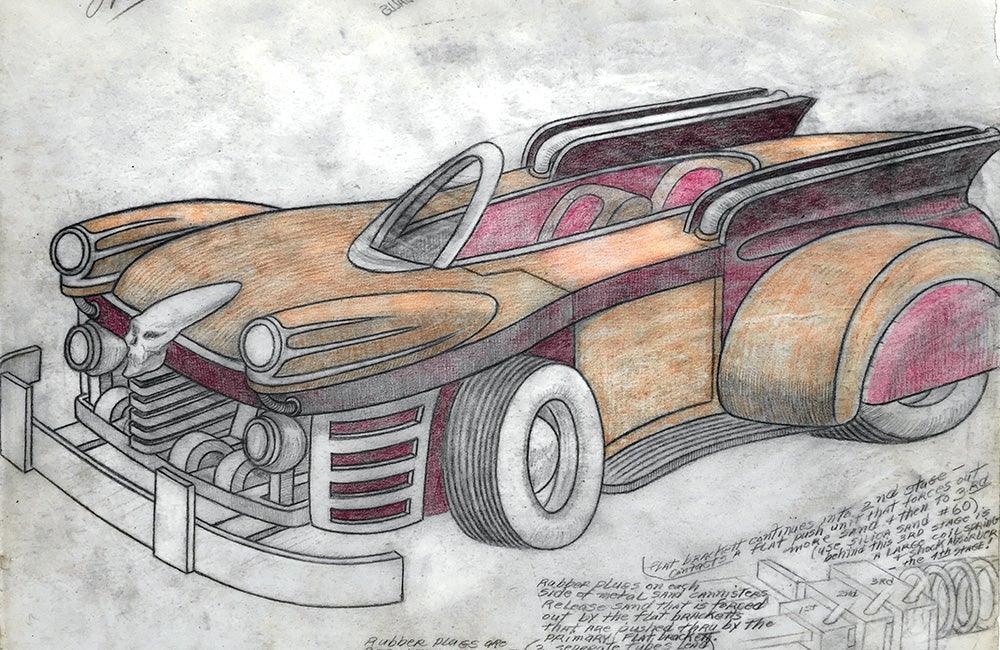First published: Winter 2016
Working in the car for up to 12 hours a day, every day, almost exclusively using pencil and coloured crayon on paper, William A. Hall has painstakingly developed an intuitive opus of images and writing that offer viewers insights into possible futures and alternate presents. These images of a world seen through a creative eye form a sprawling and compelling set of visual narratives, inventions and social comment that is continually developing. Here are cars, trains, architectural and landscape visions, and mythopoeic characters.
For two decades, the streets of Los Angeles were home to Hall. More than half of that time was spent living in a succession of cars: a couple of Cadillacs, a Buick and, most recently, a trusty old Dodge that is determined to just keep on going. The automobile is a potent symbol of America the world over. Cars represent freedom of movement and individual choice. They speak the American dream. They assume individual characters in the arts, from the novels of Kerouac and Steinbeck to Peter Yates’ movie-classic, Bullit. The car is also often a precarious sanctuary. This was the way for Hall. Too hot in summer and too cold in winter, but dry and relatively safe. Remarkably, the constrained space of the automobile interior was also a place in which he produced a remarkable body of art.
 Phantom Headlight, 2012, pencil and crayon on card
Phantom Headlight, 2012, pencil and crayon on card
Hall was born in L.A. in 1943 and describes his parents as creative people. His mother, he says, was a poet who told her son that she was a descendent of the British Romantic poet, Lord Byron. His paternal grandfather, T. Victor Hall (1879–1965), was an illustrator in New York, and Hall also describes his father as an illustrator, though he held down a day job as a traffic consultant. The family moved home several times, always in outer satellites of the Los Angeles conurbation. All of these things contribute to Hall’s story.
Hall has drawn and made art for as long as he can remember. He maintains that he really learned art on his own, though he enjoyed art lessons in his school years. Art school might have beckoned, but his family didn’t have the money to send him. This is not something he regrets. He figured he would just get on with making art anyway. Indeed, there is generally an easy-going stoicism in Hall’s character that looks first for the positives when he reflects on experience. As he himself says, as a homeless person, where you live one day at a time, he wouldn’t have survived if he hadn’t been an optimist.
Hall lived with his mother until her passing in 1997. Unable to keep up payments on the house, he found himself homeless. He says that he found it relatively easy to make the transition, having previously known people on the streets: “I was kind of drawn to them.” In his new situation, he learnt a lot about homelessness and about addiction. Always concerned to help people, he later found voluntary work and shelter with the National Council on Alcoholism and Drug Dependence for two years, working with clients and helping out. “I’d had abuses, too”, he tells us, “but I’d had six years of sobriety already before I went there.” Hall’s art is impelled by this same desire to help people and put things right.
This is an article extract; read the full article in Raw Vision #92




